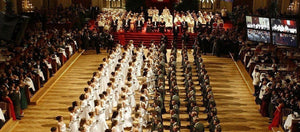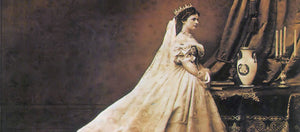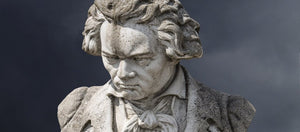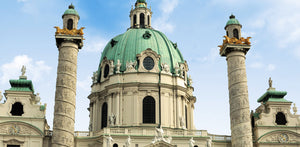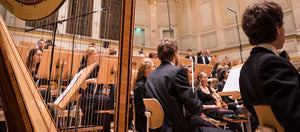History of Schönbrunn Palace
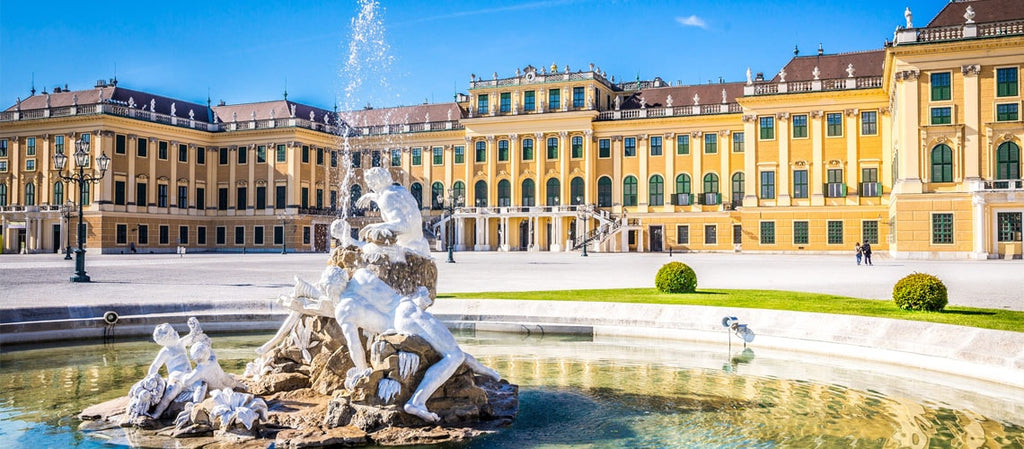
Schönbrunn - From hunting ground to imperial summer residence
What started out as a hunting lodge has now become one of Austria's most famous attractions. It welcomes around 3 million visitors each year. Serving most of the time as the imperial summer residence, Schönbrunn boasts with eye-catching exterior and interior. There are 1441 rooms in the palace, only 40 of which are open for public viewing.
The "Beautiful Spring"
In 1569, the Holy Roman Emperor Maximilian II purchased a large piece of land with a mansion called Katterburg. He put fences around the premises, making it the court's recreational hunting ground.
Later on the place was left as an heirloom to Eleonora Gonzaga. From 1638 to 1643 she added a palace to the existing mansion. The name "Schönbrunn" was mentioned for the first time. Meaning "Beautiful Spring", the name has its roots in an artesian well, where people of the court got their water.
The Schönbrunn Palace in it's present form was rebuilt in the 1740-1750s to serve as the imperial summer residence during the reign of empress Maria Theresa, who received the Schönbrunn as a wedding gift.
Today, it is renowned as one of Austria's most important cultural monuments in and is included in the World Cultural Heritage List of the UNESCO in 1996.

Palace gardens and the world's oldest ZOO
Beside the 32 sculptures, beautiful Palace Gardens include the 60-metre-high Gloriette, standing proudly facing the palace, Ruin of Cathage, a maze, the palm house serving as a magnificent botanical garden, an orangery and the world's oldest Zoo.
The area west of the castle was turned into a play and training area for children of the Habsburgs.

The music of Schönbrunn
Music had always played an essential role in the lives of Habsburg royalty. W.A. Mozart came to Schönbrunn as a 6 year-old child to play his first concerts for the royal family on October 13th and 21st in 1762. Another classical composer to visit the palace was Joseph Haydn, who came as a choirboy to take part in a musical production.
In the style of French palace design, an "Orangerie" was added to Schönbrunn.
Besides keeping citrus trees and other sensitive plants over the winter, it was the venue for one of the most notorious musical duels of all times.
Emperor Joseph II held a celebration as a public demonstration of his affection for his sister, who was visiting Vienna from Brussels. He commissioned Wolfgang Amadeus Mozart and his archrival Antonio Salieri to compose operas, which will later be played, staged at opposite ends of the Orangerie. The audience was placed between them making it possible to listen to both sides just by turning around.
Salieri composed his Prima la Musica, poi le Parole (First the Music and then the Words) in the fashionable Italian manner, while Mozart composed the Schauspieldirector (The Impresario) to challenge Salieri in the name of German opera.
The evening was a tremendous triumph for Salieri and his Italian opera. Mozart’s foolish parody of the German theatre folk was simply no match for Salieri’s sophisticated blend of music and poetry.
Since then the Orangerie became a venue for various festivities and performances. Nowadays, its legacy lives on through numerous concerts of W.A. Mozart and Johann Strauss' classical music.
Breathtaking gardens, wonderful Baroque architecture, world's oldest Zoo and its musical and cultural history make Schönbrunn Palace one of the top sights for tourists from all around the globe. Be sure to spend a day at Schönbrunn, discovering the private rooms of Vienna's royalty, strolling through the gardens that surround the Palace and enjoying a classical concert at one of Vienna's best concert venues. We guarantee you a day well spent!
TIP: in order to avoid the lines be sure to book your tour and concert tickets online.
Book your accomodation in Vienna
Booking.com- Tags: History Schönbrunn Palace


